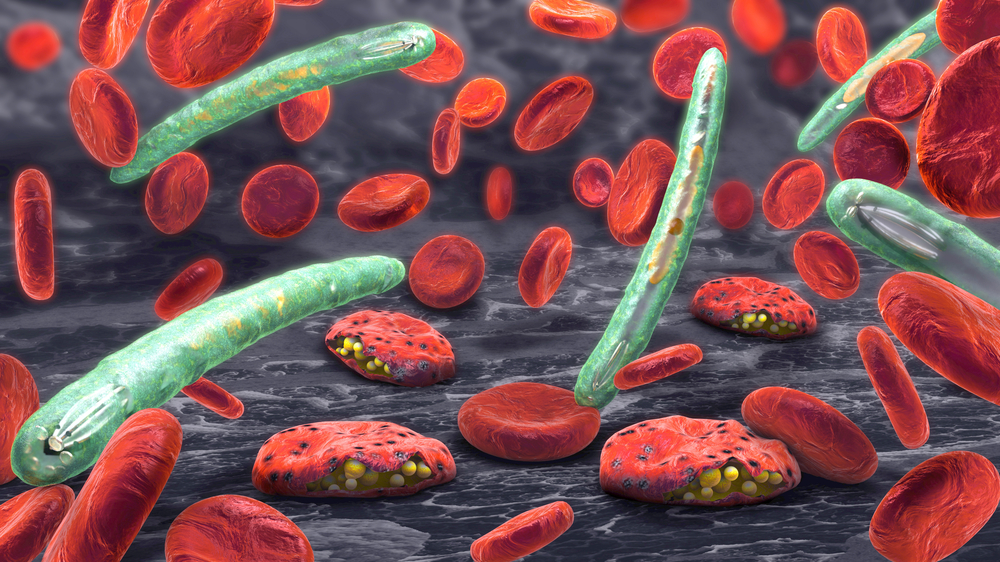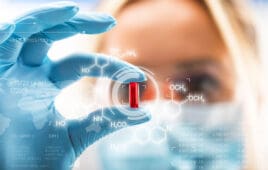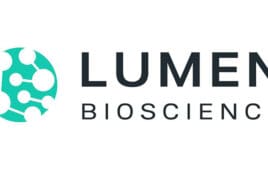
A novel laboratory-synthesized molecule based in natural compounds found in marine gliding bacteria – known as marinoquinolines – is a strong candidate for the development of a new antimalarial drug.
In tests, the molecule proved capable of killing even the strain that resists conventional antimalarials. The molecule displays low toxicity and high selectivity, acting only on the parasite and not on other cells of the host organism.
The molecule was developed in Brazil at the Center for Research and Innovation in Biodiversity and Drug Discovery (CIBFar), one of the Research, Innovation and Dissemination Centers (RIDCs) funded by the São Paulo Research Foundation – FAPESP. The researchers tested the molecule in strains cultured in vitro as well as in mice using Plasmodium berghei, since mice is immune to infection by Plasmodium falciparum, which causes the most aggressive type of malaria.
“In mice, the number of parasites in the bloodstream (parasitemia) had fallen 62% by the fifth day of the test. After 30 days, all the mice given doses of the molecule were still alive,” said Rafael Guido, a professor at the University of São Paulo’s São Carlos Physics Institute (IFSC-USP).
Guido co-authors an article published in the Journal of Medicinal Chemistry, on which the researchers describe the molecule’s inhibitory action in the blood and liver stages of the parasite’s asexual cycle, which is responsible for the signs and symptoms of the disease.
Potentializing the molecule’s pharmacological activity
Marinoquinolines were first isolated from marine gliding bacteria and, when discovered, were evaluated for activity against malaria, Chagas disease and tuberculosis. However, the natural products exhibited only weak to moderate activity against these pathogens.
“The core of these molecules, known as pyrroloquinoline [which contains 3H-pyrrolo[2,3-c]quinoline], drew our attention. This is a rare structure among natural products and is rarely discussed in the scientific literature,” said Carlos Roque Duarte Correia, a professor at the University of Campinas’s Chemistry Institute (IQ-UNICAMP) and principal investigator at the FAPESP center.
In 2012, the research group published a description of one of the first molecules synthesized from natural marinoquinolines.
“During the synthesis procedure, we realized the huge pharmacological potential of these molecules,” Guido said. “We then made new structural modifications to the pyrroloquinoline portion using efficient catalytic processes, and from the structure obtained, we created a new molecule with hundreds of times more firepower against P. falciparum and no increase in toxicity.”
Starved to death
The molecular mechanisms of action are not yet fully understood, but one of them is clearly hemozoin metabolism, a classic pathway for inhibiting the parasite.
The strategy consists of maintaining low levels of hemozoin, which is toxic to the parasite. Infection of the host begins in the red blood cells, as the hemoglobin they contain is the only source of energy for the parasite. Hemoglobin contains heme groups, which are highly toxic to the parasite in their free form (when separated from hemoglobin).
As the parasite has evolved, it has developed a mechanism that polymerizes heme groups to eliminate their toxicity. “This strategy for obtaining energy without toxicity is like sweeping dust under the carpet. The heme group stays there, but in a polymerized insoluble form that isn’t toxic to the parasite,” Guido said.
Among other mechanisms, the molecule developed by the CIBFar group of researchers inhibits this polymerization so the parasite is killed by the heme group.
“The molecule prevents formation of the polymer hemozoin, which the parasite has created to rid itself of the heme group’s toxicity. If you prevent hemozoin formation, you kill the parasite,” said Célia Regina Garcia, a professor in the University of São Paulo’s Pharmaceutical Science School (FCF-USP) and a coauthor of the article. Garcia partnered with CIBFar on the project and was responsible for testing the molecule’s mechanisms of action against the parasite.
Drug-resistant strains
Another indication that the marinoquinoline derivative is a promising drug candidate is the finding that it kills strains resistant to the three main antimalarial drugs, namely, chloroquine, pyrimethamine and sulfadoxine.
“Chloroquine is no longer used much to treat falciparum malaria, which accounts for the severest cases and most deaths from the disease,” Garcia said. “The same is expected of artemisinin, which is still the main antimalarial and still effective, but its days are numbered because of resistance. The drug-resistant strains are spreading throughout Asia. Hence, there is a worldwide concern to develop drugs for malaria. I believe Brazil has the potential to lead in this area.”
Malaria kills some 445,000 people each year, according to the World Health Organization (WHO). “If the number of deaths is so high while we have an effective drug, it will be even higher in future if we don’t develop new drugs,” Guido said. “Malaria is the world’s deadliest parasitic disease, even with the relatively effective treatment we currently have.”
Next steps
According to Duarte Correia, the first 50 molecules developed from marinoquinolines were tested in the FAPESP-supported study. “This work hasn’t ended with this publication. We’re still developing other compounds,” he said.
The researchers are also characterizing the potential of this class to treat malaria caused by P. vivax, the most prevalent form in Brazil and are developing the pharmacokinetic part of the project (how drugs move through the organism).
“If the pharmokinetic properties, especially solubility, absorption, distribution, metabolism and excretion, aren’t adequate, the compound can build up in the organism and become toxic to the patient, making it inappropriate for treatment. After completing this step, we plan to perform preclinical and clinical trials,” Guido said.
Filed Under: Infectious Disease



